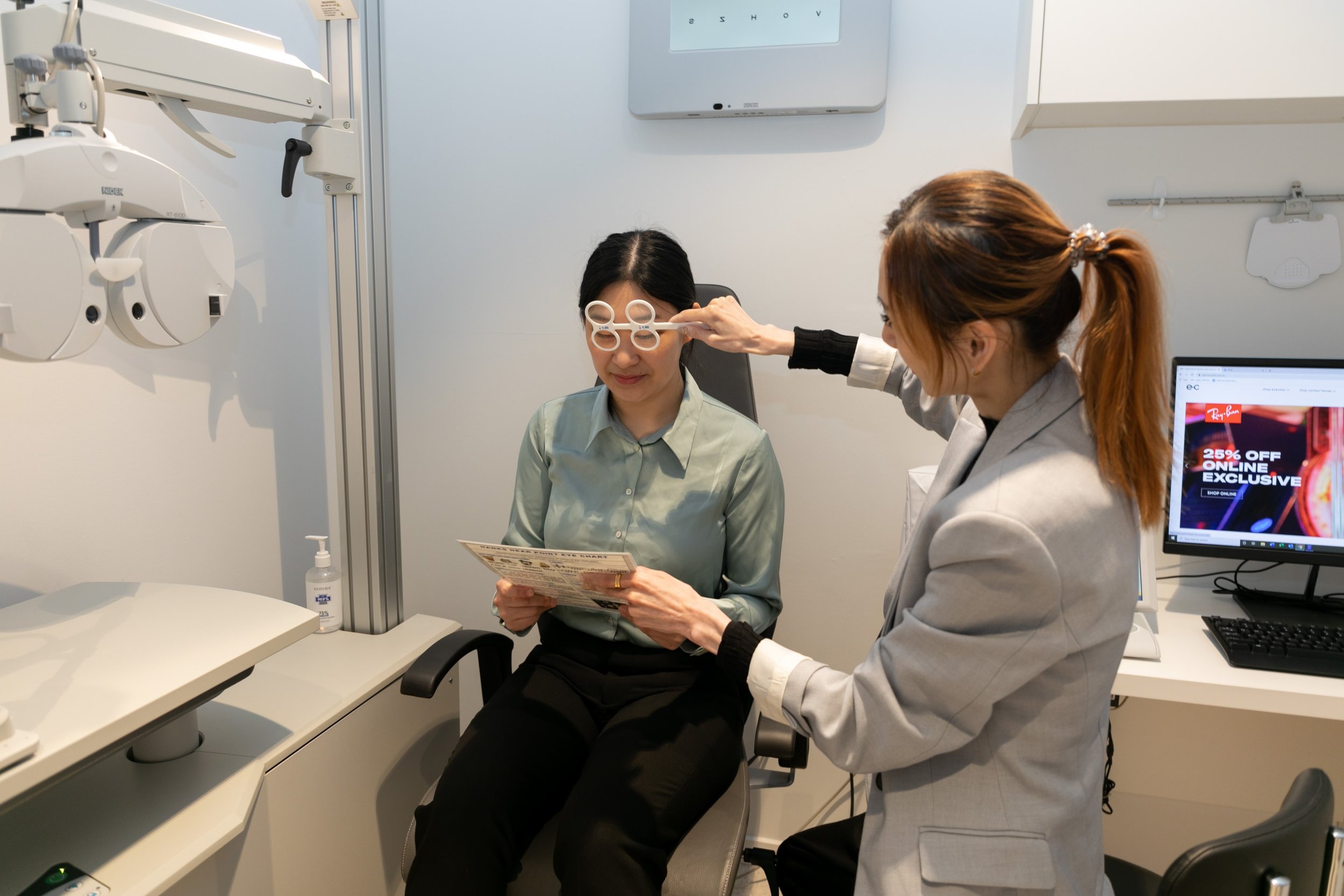4 Early Signs of Macular Degeneration in Southland
As we age, it's important to take care of our eyes and monitor any changes or symptoms that may arise. One common cause of vision loss in older adults is macular degeneration, a condition that affects the centre part of the retina responsible for sharp, detailed vision.
We will discuss here four early signs of age-related macular degeneration in Southland that you should be aware of in order to prioritise your eye health and seek prompt treatment if necessary.
1. Blurred Vision
Blurred vision is often one of the first noticeable symptoms of macular degeneration, which occurs when the macula—the area of the retina responsible for sharp central vision—begins to deteriorate. Individuals may experience a general haziness or fuzziness in their central vision, which can make it difficult to see details clearly. This blurriness may fluctuate, initially affecting only a small area in the centre of the visual field.
2. Difficulty Reading
Macular degeneration significantly impacts reading ability, as it directly affects the clarity of letters and words. As the condition progresses, individuals may struggle to focus on text, often requiring increased lighting or larger print to see better.
Some may even find that they must move the text closer or further away to enhance clarity, adding considerable strain to their reading experience. This difficulty can lead to avoidance of reading altogether, which can affect the overall quality of life.
3. Distorted Vision
Distorted vision is another early sign of macular degeneration. Individuals may notice that lines, such as those of a grid or the edges of objects, appear wavy or bent. This visual distortion can affect one's ability to judge distances and navigate familiar environments, often causing frustration and an increased risk of accidents.
4. Reduced Central Vision
Reduced central vision is a critical symptom of macular degeneration. As the condition progresses, individuals may begin to notice dark or empty spots in their central vision, which can interfere with their sight to see objects directly in front of them. This loss of central vision can severely impact daily activities, such as driving and recognising faces, while peripheral vision typically remains unaffected.
Risk Factors for Macular Degeneration
Genetic, environmental, and lifestyle factors can influence age-related macular degeneration (AMD).
Age
Age is the most significant risk factor for macular degeneration. The likelihood of developing macular degeneration increases as people get older. Approximately one in seven individuals over the age of 50 show some signs of AMD, with this number expected to rise in the coming years.
By age 80, nearly 15% of Australians may experience vision loss or blindness due to AMD. The prevalence of the condition is particularly high in those over 75, with one-third affected.
Genetics
Genetic factors contribute to up to 70% of AMD cases. Individuals with a family history of AMD, particularly those with a parent or sibling affected, face a significantly higher risk—around 50%.
Genetic variations, particularly in genes associated with the immune system and retinal health, have been linked to the condition. Therefore, those with a family history should prioritise regular eye examinations for monitoring of eye health.
Lifestyle Factors
Smoking: Smoking increases the likelihood of developing AMD by two to five times. Smokers may also experience an earlier onset of the disease and a more rapid progression if they already have AMD.
Diet: Food intake high in saturated fats and low in antioxidants can elevate the risk of AMD. Also, the ones with a high glycemic index, such as white bread and sugary snacks, may also contribute to the condition.
Obesity: Individuals with a high BMI are at a higher risk of developing macular degeneration. Obesity can exacerbate other risk factors, such as cardiovascular disease, which is also linked to AMD.
How can early macular degeneration in Southland be prevented?
Preventing early macular degeneration (AMD) involves a combination of lifestyle changes, dietary adjustments, and regular eye care.
1. Adopt a Healthy Diet
A diet rich in particular nutrients can lower the risk of AMD. Focus on incorporating the following foods:
Dark Leafy Greens: Vegetables like kale, spinach, and collard greens are high in carotenoids, which have been shown to reduce the risk of AMD.
Fish: Eating fish, particularly those high in omega-3 fatty acids (like salmon and sardines), is beneficial. Research suggests that individuals who consume fish at least once a week are less likely to develop early-stage AMD.
Fruits and Nuts: A diet rich in colourful fruits and nuts provides antioxidants that help protect the eyes. Vitamins C and E, zinc, lutein, and zeaxanthin are particularly important for retinal health.
2. Quit Smoking
Quitting smoking can drastically reduce this risk. Support programs and cessation aids can assist individuals in overcoming this habit.
3. Maintain a Healthy Weight and Exercise Regularly
Physical activity at regular times can help maintain a healthy weight and improve cardiovascular health to benefit eye health. Aim for at least 150 minutes of exercise each week.
4. Control Blood Pressure and Cholesterol
High blood pressure and cholesterol levels might contribute to the development of AMD. Monitor and manage these conditions regularly to help mitigate risk.
5. Regular Eye Exams
Regular check-ups allow for monitoring of any changes in vision and prompt intervention if necessary. Seniors, in particular, should have annual eye exams to catch potential issues early.
How does early macular degeneration progress in Southland?
Early macular degeneration (AMD) is a significant health concern in Southland, as it is the leading cause of vision loss in older adults. However, the progression of early AMD varies among individuals, and many do not develop severe vision loss.
Dry AMD Progression
Dry macular degeneration, the more common form, typically progresses gradually over several years. In the early stages, small deposits called drusen form on the retina, which can lead to mild vision distortion and reduced reading ability.
As the disease advances, the drusen may grow larger, and the retina can thin out, causing more significant vision loss. Geographic atrophy, an advanced stage of dry AMD, occurs when the retinal pigment epithelium layer is extensively damaged, leading to a gradual decline in central vision.
Wet AMD Progression
Wet macular degeneration, although less common, progresses more rapidly and is more likely to cause severe vision loss. Abnormal blood vessels grow underneath the retina that leak fluid or blood, causing sudden vision changes or loss within days or weeks.
Where to Get Tested for Macular Degeneration in Southland?
Regular eye examinations play a vital role in the early detection and management of macular degeneration. If you or a loved one is at risk for AMD, it is essential to schedule an appointment with an eye doctor in Southland at Eye Concepts.
Conclusion
Early macular degeneration (AMD) is a prevalent condition in Southland, particularly affecting older adults, but its progression can vary significantly between individuals. By recognising key risk factors such as genetics, lifestyle choices like smoking and diet, and maintaining a healthy weight, individuals can take steps towards prevention.
Implementing a nutrient-rich diet, engaging in regular exercise, quitting smoking, and managing blood pressure and cholesterol are all essential in reducing the risk of AMD. Furthermore, regular eye examinations are critical for early detection and timely intervention. With awareness and dedicated action, it is possible to safeguard eye health and enhance the quality of life for those at risk of this condition.



